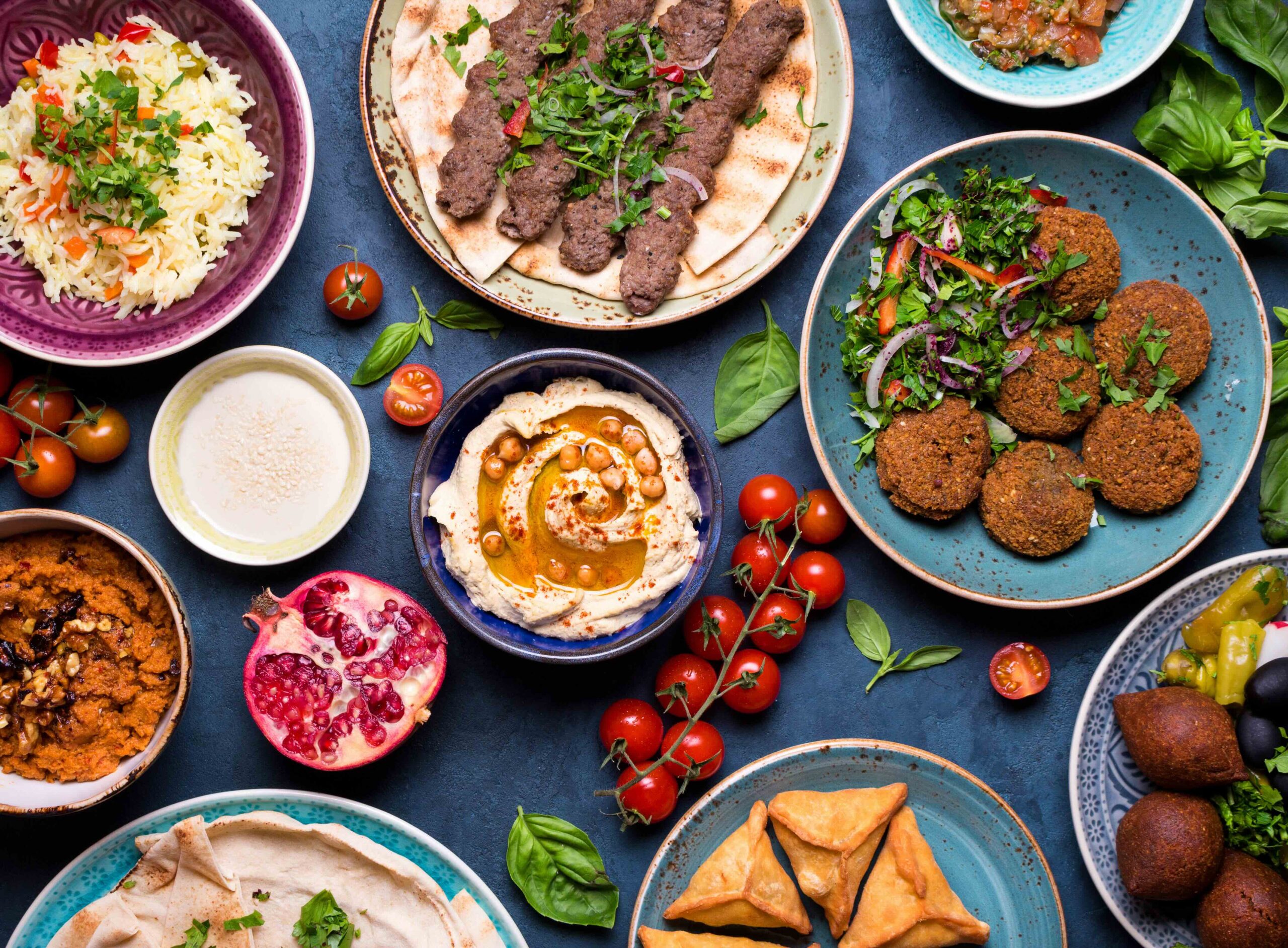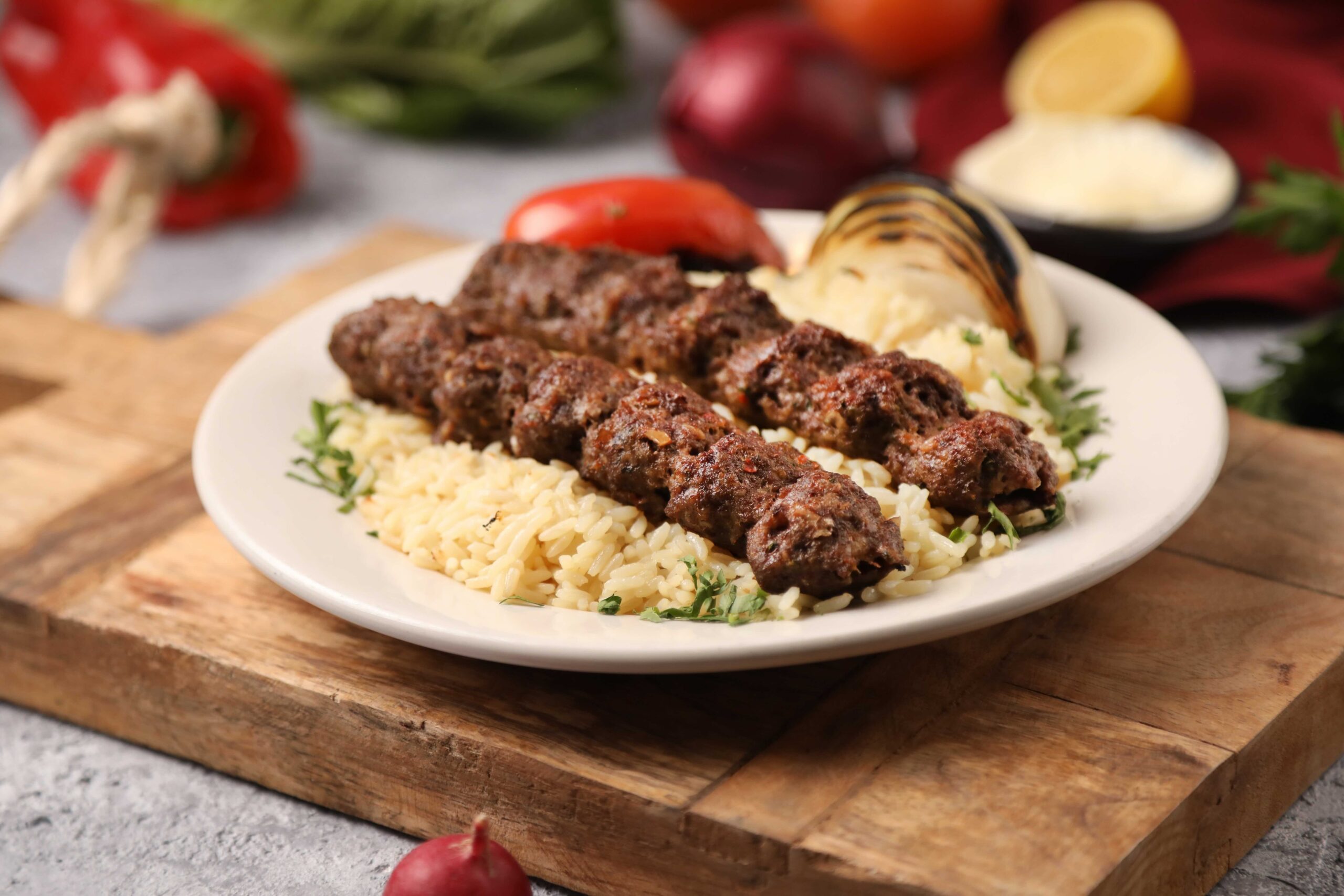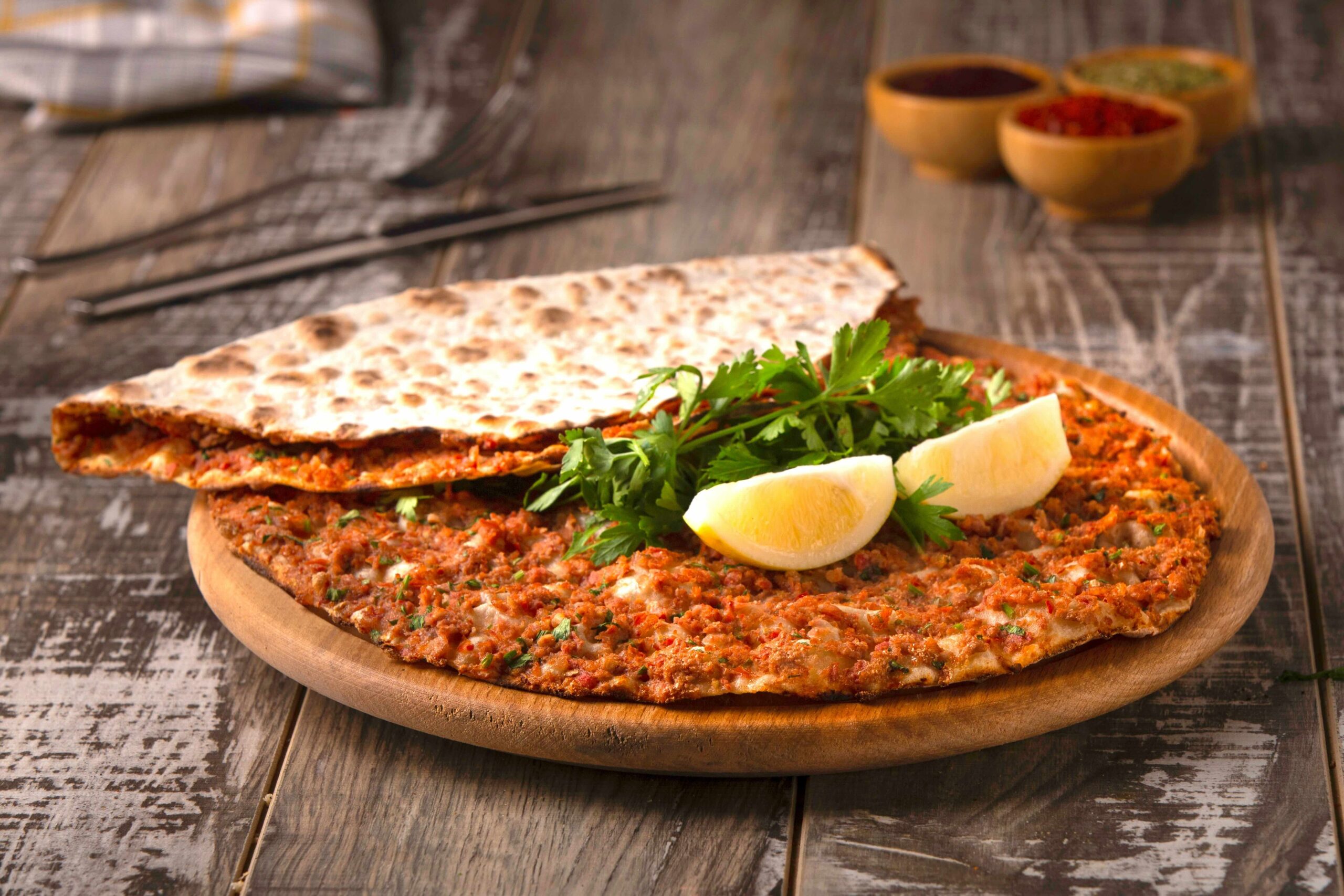An introduction to Turkish cuisine

According to culinary experts, Turkish cuisine stands alongside Chinese and French as one of the three greatest cuisines in the world. Read on to find out why…
Straddling the continents of Europe and Asia, and with seven geographical regions, it’s no wonder that Turkey is a country of diverse and delectable dishes, boasting a rich tapestry of flavours and ingredients. If you’re travelling in the west, food is served with lashings of olive oil. The east is famous for pastries like Baklava. In cities and towns along the Black Sea you’ll find an abundance of fresh fish. If you’re visiting Istanbul, you’ll find Simit, a sesame crusted bagel, all over the city. And in the capital Ankara, meat is king, with hearty kebabs, dumplings and lamb featuring heavily on restaurant menus. Rice is also used extensively in Turkish cuisine. It’s served with almost every dish and features in many stuffed meat and vegetable dishes, like Dolma.
Join us on a culinary adventure, as we explore the delights of Turkey’s rich and colourful food scene, including must-try dishes, what you need in your kitchen to make them at home, plus the art of reading Turkish coffee grounds.
Did you know?
In October 2019, Simit (also known as Turkish bagel), earned a spot in the Oxford English Dictionary, defined as “a type of ring-shaped bread roll originating in Turkey, typically coated with molasses and encrusted with sesame seeds before baking.”
The history of Turkish food
Turkish cuisine has evolved over centuries, but it traces back to the Neolithic era, where nomadic Turk tribes who roamed Central Asia, lived on a simple diet of meat, yogurt and wheat-based dishes while rearing livestock. Turkish food is also greatly influenced by the Ottoman Empire – one of its most notable being the extensive use of herbs and spices like saffron and cloves, to add depth, flavour and complexity to dishes. The Ottomans also introduced cooking techniques like slow roasting and braising, which are used in a number of traditional Turkish recipes, particularly kebabs and stews. Two of Turkey’s most loved desserts, Turkish Delight (Lokum) and Baklava, are also thought to have originated from the Ottoman palace kitchens.
Despite its deep traditions, Turkish food continues to evolve and in the country’s largest cities, like Ankara, Istanbul and Izmir, you’ll find a number of restaurants experimenting with fusion cuisine – with chefs combining traditional flavours and ingredients with modern cooking techniques. You’ll also see international favourites like Chinese noodles, Italian pasta and American fast food creeping onto menus, although they’ll often have a unique Turkish twist. For example, Sucuk Pizza – a pizza generously topped with slices of Sucuk, a type of Turkish sausage, cheese, garlic, paprika and red pepper flakes.
Turkish foods you need to try
If you’re planning a trip to Turkey, here are some traditional dishes you should definitely try.
1. Mezze
You can’t visit Turkey without trying mezze. It’s more of a style of eating than a single dish, where friends and family come together to feast on a variety of mouth-watering hot and cold savoury appetizers, including hummus, olives, drizzled feta cheese, Peynir (white cheese), yogurt (Lebne), cured meats, vegetables and Dolma – grape or cabbage leaves usually stuffed with a variety of vegetarians fillings. Why not give our Lemon and Herb Rice Mezze Platter recipe a try?
2. Manti
Manti, also referred to as the ‘Turkish dumpling’ is Turkey’s version of ravioli – dough shaped parcels filled with minced lamb and onions, or aubergine for vegetarians, bathed in a rich yogurt-garlic sauce with butter, and topped with chilli flakes. It’s the perfect comfort food and very filling.
3. Kebab
Kebabs are undoubtedly one of the biggest specialities in Turkey. You’ve most probably heard of the Döner Kebab (a popular late-night snack in the UK typically made from lamb or beef, seasoned with a blend of spices and cooked on a large vertical spit. The meat is then shaved into thin slices and served in pitta with salad and long grain rice. The Shish Kebab is another well known variety, where marinated lamb or beef is cooked on a skewer (written şiş in Turkey) along with vegetables like green peppers, onions and mushrooms, and grilled to perfection over charcoal. If you like your kebabs with a kick, then make sure you try an Adana Kebab, which as you’ve probably guessed, is named after the city of Adana in South-Eastern Turkey. It’s made of minced lamb, seasoned with red chilli flakes and salt, and served on skewers. And finally, if you visit the city of Bursa in northwestern Turkey, make sure you don’t miss out on trying an Iskender Kebab – thinly sliced lamb or beef served over pitta and smothered with melted butter and spiced tomato sauce.

4. Keşkek
Keşkek is a Turkish ceremonial dish, often served at weddings and religious holidays. It’s a simple slow cooked stew of marinated lamb, chickpeas and cracked wheat, traditionally cooked in a huge cauldron for a long period of time before mixing it with butter. You’ll find it in restaurants that serve home-style cooking. And it’s a tradition so treasured it’s officially made its way onto UNESCO’s Intangible Heritage List, that exists to raise awareness of the importance of heritage, celebrate diversity and safeguard traditions.
5. Börek
Börek is a savoury, light, flaky and delicate pastry stuffed with an assortment of fillings like minced meat, cheese, spinach or potato. They can be fried, baked, cooked on a griddle or boiled, and are often served with Turkish tea.
Lahmacun
Commonly referred to as ‘Turkish pizza,’ Lachmacun has been eaten by Turks for more than 300 years. Unlike the pizzas we know and love in the UK, this variety is completely cheeseless. Essentially, Lahmacun is an extremely thin crispy flatbread covered with a layer of tomato paste, onion, red pepper and spicy minced meat – typically served with fresh parsley and a squeeze of lemon juice.

A sip of tradition: Turkish tea and coffee
Turkish Tea (or çay) and coffee are an important part of the country’s culture and history. Turkey is one of the top five producers of tea in the world, while coffee has been savoured since the 16th century, with its very first coffee house opening in Istanbul back in 1554.
Fortune-telling by reading coffee grounds, known as tasseography, is a widespread practice in Turkey. Fortune tellers (Falcı), have been carrying out this ritual for centuries, looking for patterns or symbols left imprinted in the sediment at the bottom of the cup. A bird is said to symbolise an upcoming journey or good news, a fish could hint at a job promotion or new opportunities, and a flower, in particular a red rose, signifies love or a blooming relationship.
Meanwhile tea has become entrenched as a daily ritual for Turks and is a symbol of hospitality and friendship, served in every home and workplace. Shop owners offer it to customers too. It’s prepared using a special double teapot called a çaydanlık and is typically taken strong, without milk and sweetened with sugar cubes or honey.
Eat like a Turk: 10 essential ingredients for Turkish cuisine
If reading about kebabs, mezze and Börek has made you hungry and you want to feast like a Turk at home, here are 10 essential ingredients you’ll need in your cupboard, fridge or freezer:
- Rice or bulgur wheat
- Beef or lamb
- Garlic
- Eggplant or aubergine
- Tomato and red pepper pastes
- Grape leaves
- Chickpeas
- Yoghurt
- Onion
- Olive Oil
Need some inspiration? Check out our recipe for Spicy Kebabs with Wholegrain Rice.